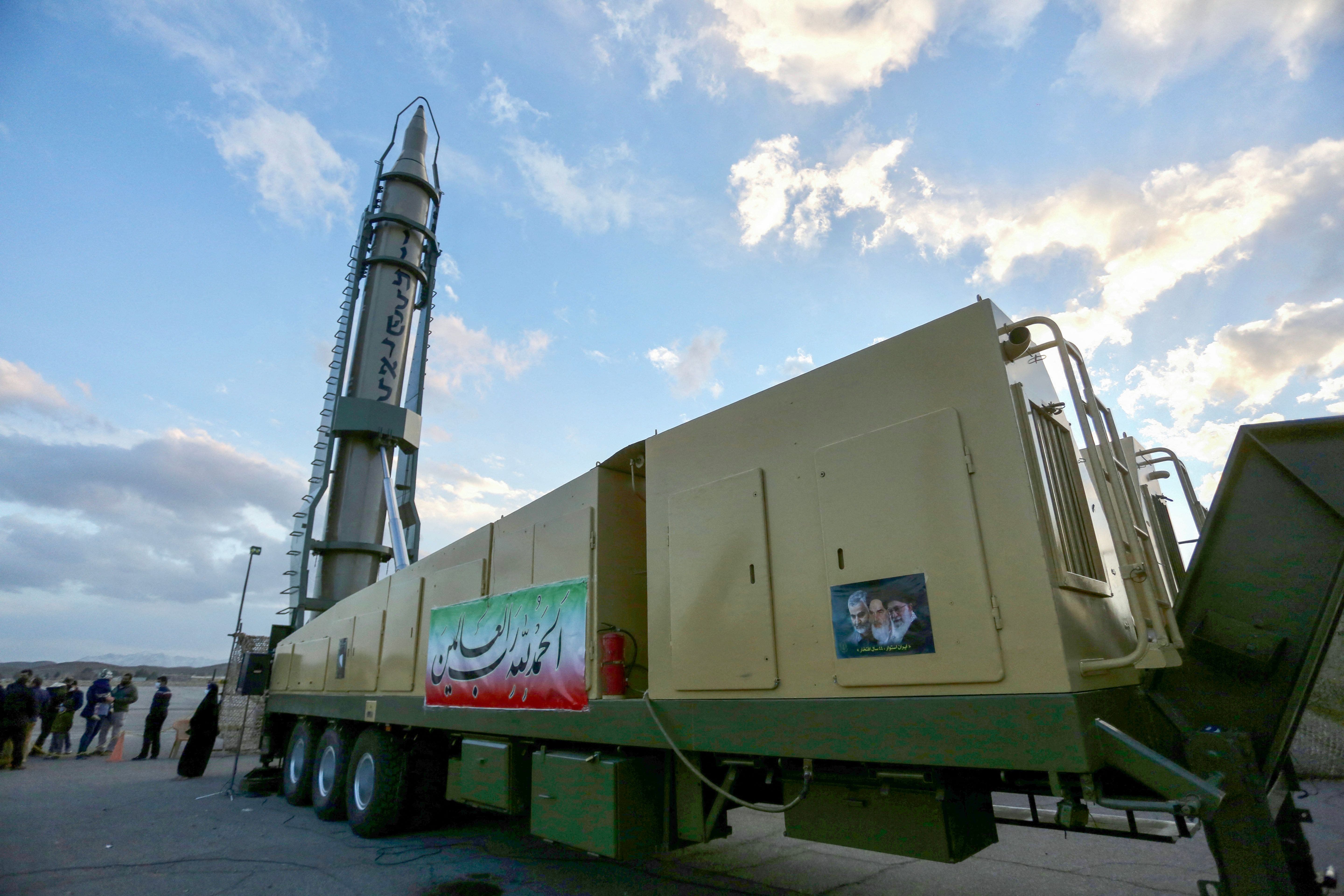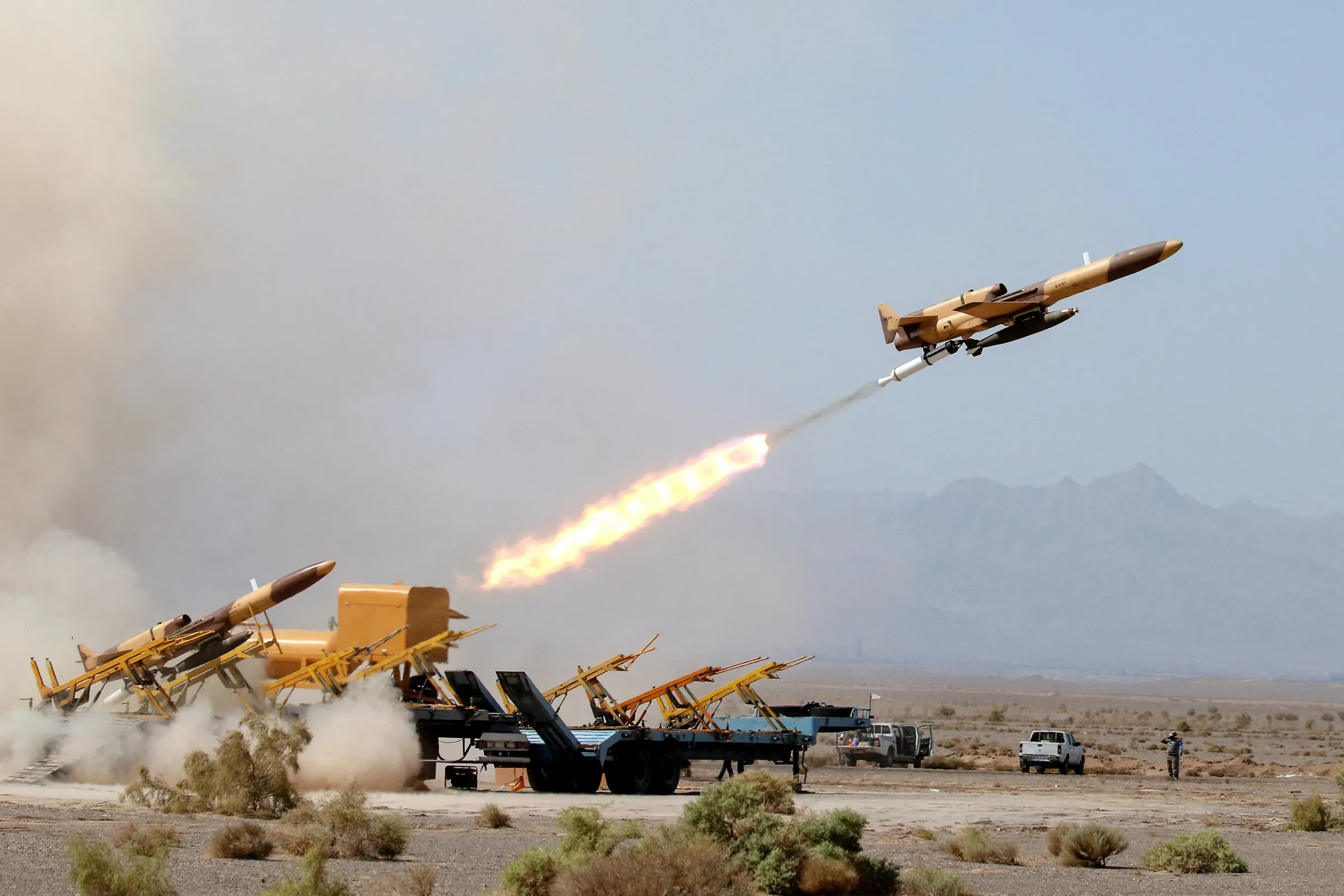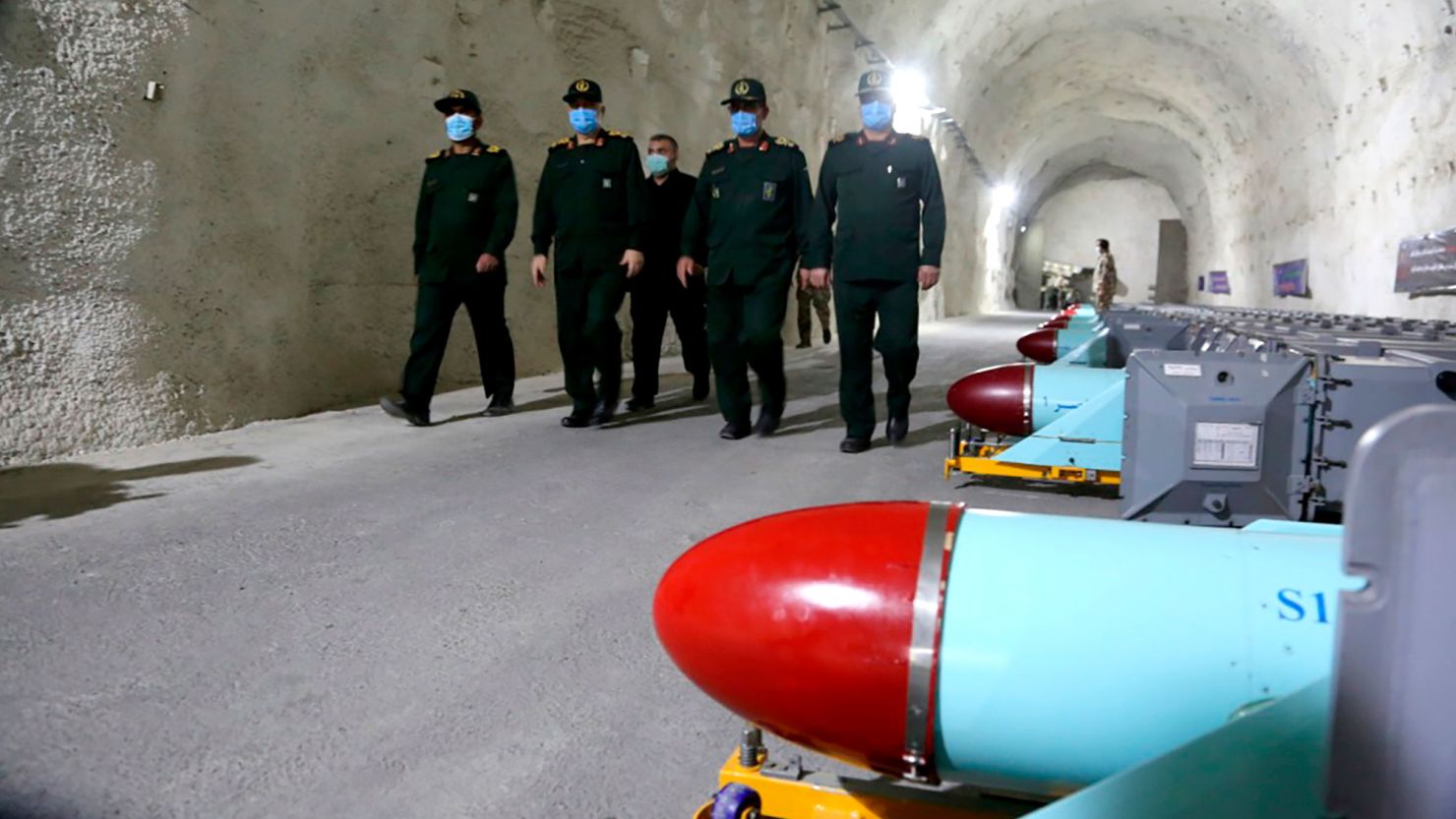Iran's Missile Strength - How Many Ballistic Missiles?
When folks talk about military power in the Middle East, one topic that often comes up is the sheer number of ballistic missiles that Iran might possess. It's a question that gets asked quite a bit, and for good reason, because understanding this aspect of their capabilities helps paint a clearer picture of regional dynamics. We're talking about a significant collection of these weapons, which, you know, makes them a very important player in the area.
Figuring out the exact count of these long-range weapons is, in some respects, a bit like trying to pin down a moving target, simply because the numbers can shift and different groups might have slightly varied ways of calculating things. What's clear, however, is that Iran has built up a very substantial supply of these missiles over time. This includes various types, some of which can actually travel quite far, reaching places that might surprise you, like parts of Europe.
Over the past decade or so, there's been a really big push to make these weapons even better. They've put a lot of effort into making them more accurate and, too it's almost, more effective in general. This continuous effort means that Iran's missile forces are now considered a pretty serious force to reckon with, which is, like your, a key piece of information when you consider the broader security picture.
Table of Contents
- Just How Many Ballistic Missiles Does Iran Have?
- Iran's Arsenal - How Many Ballistic Missiles Are There?
- What Makes Iran's Missile Forces a Real Factor?
- Have Iran's Missile Capabilities Grown Over Time?
- How Many Ballistic Missiles Have Been Fired Lately?
- What About Iran's Remaining Ballistic Missile Reserves?
- How Quickly Can Iran's Ballistic Missiles Reach Their Targets?
- A Look at the IRGC's Missile Collection
Just How Many Ballistic Missiles Does Iran Have?
When we look at the general picture, it seems Iran has a really considerable number of ballistic missiles, actually. Some reports suggest this figure is well over three thousand, which, you know, places them with the biggest collection of these types of weapons in the whole Middle East. This large quantity isn't just a random number; it points to a very deliberate strategy to build up their military power.
It's important to remember that the exact count can, naturally, be a little bit fluid. The actual number might change based on who is doing the counting and how they go about it. For instance, what one group considers a ready-to-use missile, another might view differently, perhaps including those in various stages of development or storage. So, while the "over 3,000" figure is widely cited, it's more of a general estimate, really, giving us a sense of the scale rather than a precise, moment-by-moment tally.
This huge number of missiles includes a very diverse set of types, too it's almost. They have a variety of ballistic missiles, and also cruise missiles, which are a different kind of weapon. Some of these can travel very long distances, far enough to reach places like Israel, and even parts of Southeast Europe. That reach is a pretty significant detail, meaning their influence extends quite a bit beyond their immediate neighbors, in a way.
Iran's Arsenal - How Many Ballistic Missiles Are There?
Focusing a bit more on the specific counts, Israeli military sources, for example, have offered some insights into how many ballistic missiles Iran had at the start of recent events. According to them, Iran began with roughly three thousand of these weapons. This initial figure provides a sort of baseline for understanding their overall capacity, which is, like your, a pretty big number to start with.
However, as events unfold and missiles are used, or perhaps damaged, that number can, and often does, change. After launching a couple of hundred and losing others due to strikes from Israeli forces, the estimate of their remaining stock dropped to around two thousand. This suggests that while their initial supply was quite large, it's not an unlimited resource, obviously, and it can be reduced through conflict.
There's also information about the pace at which Iran might use these weapons. For instance, one expert, Kalisky, mentioned that Iran fired about a hundred missiles on a single day recently. This kind of detail gives us a sense of their ability to keep up a certain rate of launches, indicating they could, in fact, maintain a pace of about a hundred missiles being fired. This operational capacity is a pretty important aspect to consider, too, when thinking about how many ballistic missiles Iran might have available for ongoing use.
What Makes Iran's Missile Forces a Real Factor?
Over the last ten years, Iran has put a lot of time and resources into making their missile systems much better, actually. They haven't just been collecting more; they've been working hard to improve the quality of what they have. This effort has focused on things like making the missiles hit their targets more precisely and increasing their destructive power, which, you know, makes them a much more serious threat.
These improvements mean that Iran's missile forces are now considered a very potent part of their military. It's not just about the sheer quantity of how many ballistic missiles Iran has; it's also about the increased effectiveness of each one. When a weapon can hit its mark more accurately and cause more damage, it becomes a much bigger concern for anyone on the receiving end, in a way.
The continuous investment in these weapons shows a clear long-term strategy. It's about developing a capability that can act as a deterrent or, potentially, be used in a conflict. This focus on improving precision and lethality has really changed how these missile forces are viewed by others in the region and beyond, essentially turning them into a very significant element of their national power.
Have Iran's Missile Capabilities Grown Over Time?
The information we have suggests a clear trend of growth and improvement in Iran's missile capabilities, particularly over the last decade. A 2022 estimate from the U.S. points to Iran having more than three thousand ballistic missiles, which, you know, is a substantial number that has been built up over time. This figure itself shows a considerable accumulation of these weapons.
Beyond just the numbers, the country has really worked on making their missiles more accurate during this period. Before, some of these missiles might have been seen as less precise, but now, that perception has shifted. They've focused on engineering improvements that allow these weapons to hit their intended targets with much greater reliability, which is, like your, a very important change.
This ongoing effort to refine their missile technology means that what was once a large but perhaps less refined collection has become a more sophisticated and, arguably, more threatening arsenal. The ability to strike with greater accuracy means that fewer missiles might be needed to achieve a specific goal, which in turn makes the entire collection more effective overall, naturally.
How Many Ballistic Missiles Have Been Fired Lately?
When we look at recent events, there have been instances where Iran has used a good number of its missiles. For example, according to some reports, Iran launched about two hundred missiles towards Israel since a particular Friday night, along with many explosive drones. This gives us a concrete idea of the scale of their recent operational activity, which is, like your, a pretty big number of launches in a short time.
This kind of action provides a glimpse into their current operational capacity and willingness to use these weapons. It's one thing to have a large stockpile, but it's another to actually deploy them. The fact that they launched so many in a relatively short period shows a certain level of readiness and, in some respects, a very organized approach to using their missile forces.
Tracking these launches, including how many ballistic missiles Iran has fired and how many might remain, offers really important insights. It helps people understand the possible intensity of future conflicts and also gives a sense of how well missile defenses are working. This information is, basically, critical for anyone trying to figure out what might happen next in the region, in a way.
What About Iran's Remaining Ballistic Missile Reserves?
As a particular operation, "Rising Lion," has been intensifying, Israel has made estimates about Iran's remaining missile reserves. They believe Iran still holds around two thousand ballistic missiles from its original collection. This figure suggests that even after some recent launches and losses, a very substantial portion of their arsenal is still available, which is, like your, a significant amount.
The situation is quite tense, too, with over one hundred seventy strategic targets reportedly hit, and Tehran feeling the pressure from sustained strikes by Israeli defense forces. Despite these pressures, the lingering threat of further escalation is very real, especially considering Iran's remaining missile reserves. This suggests they still have the means to respond, even if their command structure might be a bit disrupted, naturally.
The potential for Iran to use these remaining missiles is a major concern. Depending on how effective recent strikes on their missile sites have been, their ballistic capability might still be their most impactful way to strike back. This means that even with ongoing military actions, their missile forces remain a very important part of their strategic options, basically.
How Quickly Can Iran's Ballistic Missiles Reach Their Targets?
The speed at which Iran's ballistic missiles can reach their destinations is a pretty important factor to consider. For instance, their ballistic missiles are capable of reaching Israel within a remarkably short time frame – just twelve minutes. This speed means there's very little warning time for potential targets, which, you know, makes them a very immediate threat.
Cruise missiles, which are a different type of weapon, take a bit longer, roughly two hours to reach similar targets. Drones, on the other hand, take even more time. The varying speeds of these different weapon systems mean that the threat landscape is not uniform; some attacks could come very quickly, while others might allow for a bit more time to react, in a way.
This rapid delivery capability for ballistic missiles highlights their strategic importance. The ability to launch a weapon that arrives in minutes changes the nature of any potential conflict, essentially. It underscores why understanding how many ballistic missiles Iran has, and how fast they are, is such a critical piece of information for military planners and policymakers alike, basically.
A Look at the IRGC's Missile Collection
The Islamic Revolutionary Guard Corps, or IRGC, oversees Iran's missile arsenal, which is widely recognized as the largest and most varied in the Middle East. This collection isn't just about having a lot of missiles; it's also about the different kinds they possess, allowing for a variety of strategic uses. So, when we talk about how many ballistic missiles Iran has, we're really looking at the IRGC's holdings.
General Kenneth McKenzie, who commanded U.S. Central Command, stated in 2022 that Iran had more than three thousand ballistic missiles. This figure from a high-ranking military official provides a pretty solid confirmation of the sheer size of their missile forces. It emphasizes that this isn't just a small, limited collection but a very extensive one, which is, like your, a significant point.
Iran has, over the years, had many opportunities to develop and expand this arsenal. These opportunities have allowed them to refine their designs, improve their manufacturing processes, and increase the overall number of missiles they can produce and deploy. This continuous development means their missile capabilities are not static but are, in fact, always evolving, naturally.
In a recent event, Iran fired a barrage of ballistic missiles at Israel. This action was reportedly in response to Israel's campaign against Tehran's allies in Lebanon. This particular incident showed off the array of weapons Iran has at its disposal, drawing on a collection that has been built up and refined over a very long period. It demonstrates their willingness to use these weapons and, too it's almost, the variety they have to choose from.
We've explored the significant number of ballistic missiles Iran is believed to possess, often cited as over three thousand, making it the largest collection in the Middle East. We looked at how these numbers can shift based on various sources and events, like recent launches and losses that might have brought the current estimate closer to two thousand. We also touched on the considerable investment Iran has made over the last decade to improve the precision and overall effectiveness of these weapons, making them a potent military factor. Additionally, we considered the rapid speed at which these missiles can reach targets, such as Israel, within minutes, and examined the broader scope of the IRGC's diverse missile collection.

Iran shows off new deadly missile with 'death to Israel' written on it

Russia seeking hundreds of ballistic missiles from Iran in 'full

Iran unveils underground missile base on Gulf coast, state media says | CNN